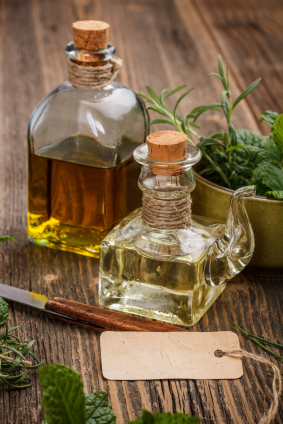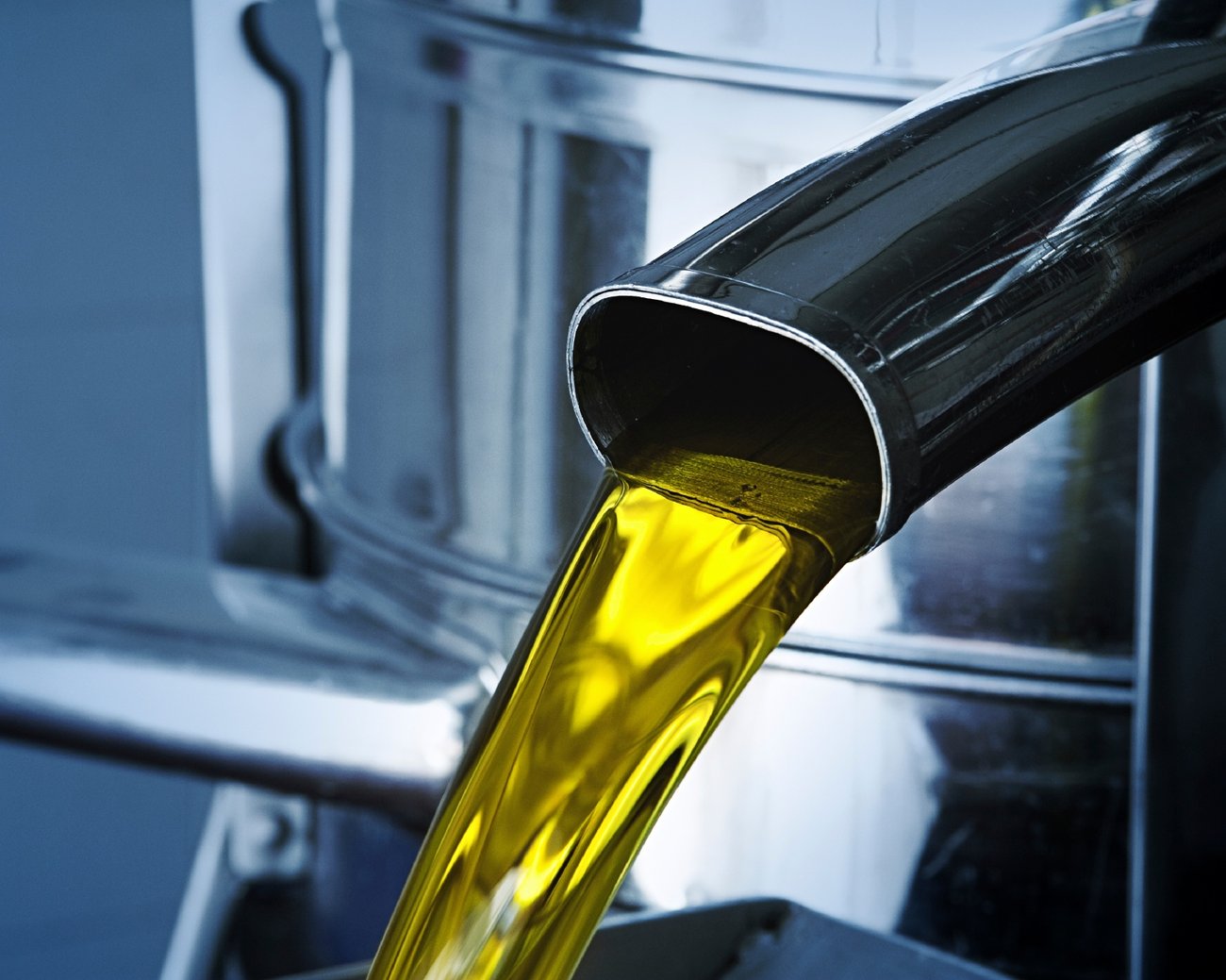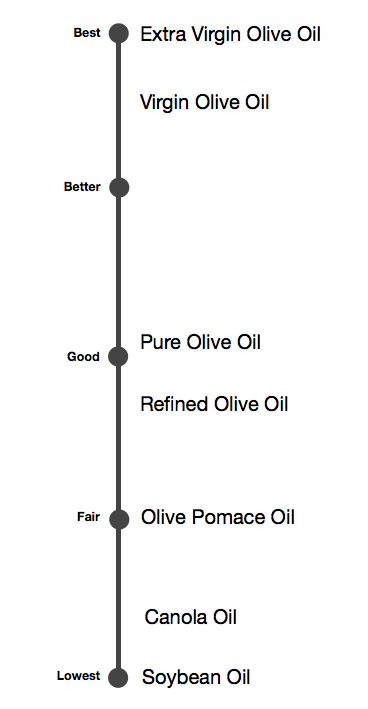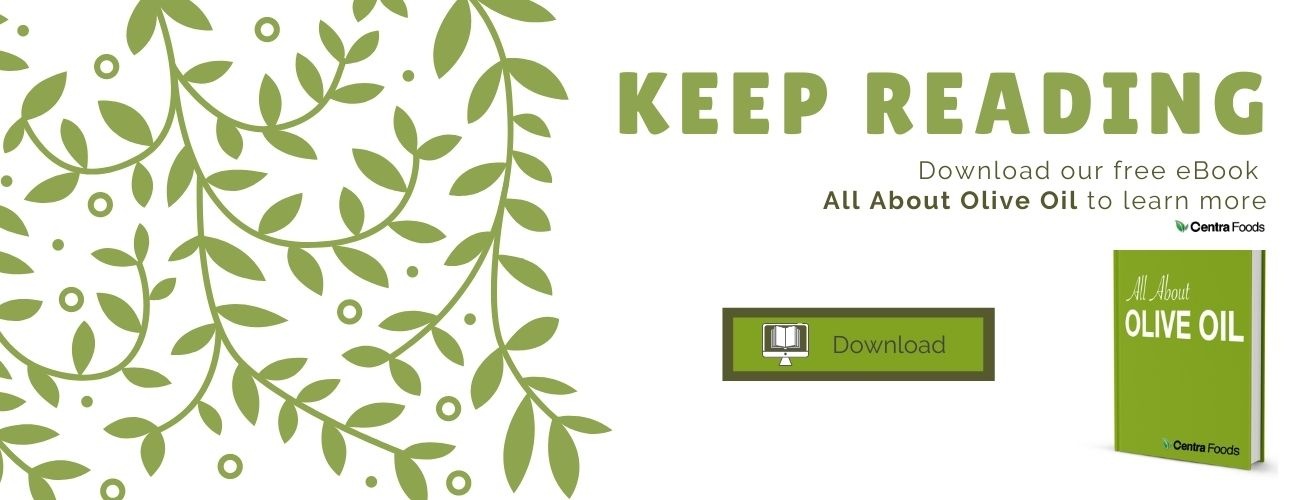
Have you ever seen the price of Pure Olive Oil be almost as high as Extra Virgin Olive Oil? I have — most of us in the food manufacturing world have. And people often ask me why.
The answer is simple and complex at the same time. In a vacuum — in a perfect world — the price of pure olive oil should fall somewhere between Extra Virgin Olive Oil and Olive Pomace Oil. It is, of course, the olive oil grade between these two extremes (along with Refined Olive Oil) and pricing should correspond.
In the good harvest times, it follows exactly this pattern. But in times of poor harvest and bad olive oil production, the olive oil commodity market (aka, the simple economics of supply and demand) has more of an impact on the pricing comparison scale that you might expect.
How Pure & Extra Virgin Olive Oil Are Different
When you compare all the different grades of olive oil, Extra Virgin is the highest. It is essentially olive fruit juice, cold-pressed or spun from olives. It meets the highest chemical requirements and doesn’t have any taste flaws.
Next down the list is Virgin Olive Oil — it is made in the same way that Extra Virgin is, but it doesn’t have to meet the same strict quality (especially Free Fatty Acid or FFA) requirements.

After that is Pure Olive Oil. This is made by taking Virgin Olive Oil and refining it — similar to how canola or soybean oil is refined, using high heat, steam and an earthen bleaching clay. This removes a lot of the color and flavor in the olive oil. That process yields Refined Olive Oil. Extra Virgin is then blended back in in a small ratio (5-30%) and the final product is known as the grade “olive oil” (yep, just plain old “olive oil” or more often known as “Pure Olive Oil” here in the US — the word “pure” is just a marketing term that actually notates the grade).
After that, the final lowest grade is olive pomace oil. If you want to learn more about how any of these grades are made, download The Olive Oil Grades: A Cheat Sheet below.
In An Ideal Market
In the perfect olive oil world, the olive oil grades fall on the following scale.

The moral of the story here is that Extra Virgin is the highest quality oil — on the top of the scale. Pure Olive Oil is at the dead center of the scale. It’s a middle of the road oil: it’s not produced using solvents, but it is refined.
This scale represents both the grades of olive oil (based on how they’re made) and the pricing pretty much lines up. All is right in the world (sigh…).
In an ideal market, when production is plentiful, prices are low and olive oil is in great supply, the prices on the commodity market typically follow this scale. Extra Virgin Olive Oil is the most expensive oil, Olive Pomace Oil is the least expensive, and Pure Olive Oil falls somewhere in the middle.
In A Market Under Pressure
If you’ve bought Pure Olive Oil in recent years, you’re probably saying, “That scale is not what I’ve seen!”
That’s exactly right. In recent years, our olive oil harvest has been less than plentiful and the market has been slowly trending up over the last 8 years. That’s put a lot of pressure on the market and the way that the price of Pure Olive Oil compares to Extra Virgin is very different.
In fact, Pure Olive Oil has been within a few cents of Extra Virgin Olive Oil, sometimes landing at right around the same price.

The Logical Buyers Thoughts
In any logical persons mind, this doesn’t make sense! And you’re right, it doesn’t. But because the olive oil works — somewhat — like a commodity market, it isn’t always going to make logical sense.
In any logical consumers mind, Extra Virgin Olive Oil is of a higher quality, and it should be priced as such. And this is true… if and when you are working in a gourmet, specialty, or retail market.

The bulk commodity market, however, is a different story. In the bulk market, the economics of supply and demand come in to play much more strongly. This is because we’re all so close to the original source and handling such large volumes.
Basic Economics: The Reality Of What Is Happening To Pricing

The reality of what is happening is this: in a tight market, when there is less supply than demand (like this year, for example), there is actually less olive oil being produced and available in the world. In other words, there is a lack of supply while demand remains steady.
There is less oil being produced because there are physically less olives available, that are being grown. This often has to do with weather, lack of rain, dry climates, or damage to trees (like with a fungus or a freeze at the wrong time). For whatever reason, there are less olives available.
Less olives mean two things for farmers:
1.) The farmers producing them will receive less money, and therefore need to get the most for what they have available. It’s now in their interest to make sure that those olives are taken the best care of so that the oil quality is preserved during production and it can be sold as Extra Virgin Olive Oil.
2.) There’s less of the things that can degrade the oil and cause a Virgin Olive Oil to be selected to become Refined or Pure Olive Oil — one example is that there is less of a wait time in the sun at the mill. In bountiful harvests, there can be longer wait times at the mill when the olives are harvested; they are brought to the mill immediately after harvesting, within a few hours, but have to wait for whatever production is already ahead of them. Time in the sun while they wait can break down the olive, causing what would have been an Extra Virgin Olive Oil to be a Virgin Olive Oil with higher free fatty acid levels.
3.) There’s less reserves of olive oil available, to act as a buffer and to be refined into Pure Olive Oil if need be.
All of this means that farmers are focused on producing EVOO with the olives that they have, and supply of EVOO goes up while the supply of Pure Olive Oil remains lower.
That ratio alone is enough to tip the market balance of supply and demand. With less Pure Olive Oil available, and a steady demand for it in the market, the price of that oil goes up.

In a good market with more oil available, the prices of Pure Olive Oil will go down again back to the middle that fits the price-to-quality scale we all — as logical people — have in mind.
Saving Money By Switching To Pure Olive Oil
 If you’ve ever wondered if it would save money to switch from Extra Virgin Olive Oil to Pure Olive Oil in your manufacturing, the answer is definitively: maybe… sometimes…
If you’ve ever wondered if it would save money to switch from Extra Virgin Olive Oil to Pure Olive Oil in your manufacturing, the answer is definitively: maybe… sometimes…
It all depends on where we are in the scale above and if the market is tight or not. And of course, if you do switch to Pure Olive Oil when the market is good and the price is reasonable, there’s always a chance that the market will change and you’ll pay almost the same for Pure or EVOO in years to come.
Helpful right? It’s not something that I like to recommend that food manufacturers rely on, so if lower pricing is what you’re going after, we can always discuss the best ways to go about it.
Topics: Extra Virgin Olive Oil, Pure Olive Oil













